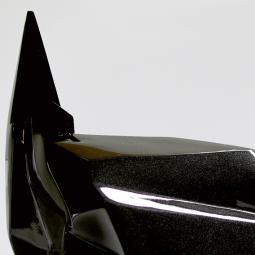Biography
Considering basic forms which evolve in space Th. Klonaris creates certain utopias; even if these idyllic places are imaginary, they include aspects of real life and assisted by the notion of “hearth” become familiar to the spectator, Th. Klonaris suggests an al- ternative reality, and acts not only as a mere artist who struggles to serve the surface on which he works on academically; on the contrary he is constantly setting out for solu- tions, through a narration of place and scale. His utopias have an awareness, which de- rives from the fact that real scale and place in society are simultaneously represented de- nied and inverted. His work has us, people as a starting point who strive for survival as well as our co-existence and reconciliation with nature. These elements evoke a clearly social and political model.
What is fascinating is that the human figure is absent from all his compositions. Never- theless human interference is witnessed in all his ground plans, huts, houses and his use of furniture; which are not necessarily compatible with a rational situation but with a more or less ideal one. With his narration Th. Klonaris introduces us in his own private dimension. His visual language is not only focusing on flat shapes or meticulous draw- ing, but he is also questioning the feasibility and possibility of things through a different approach of scale and place.






